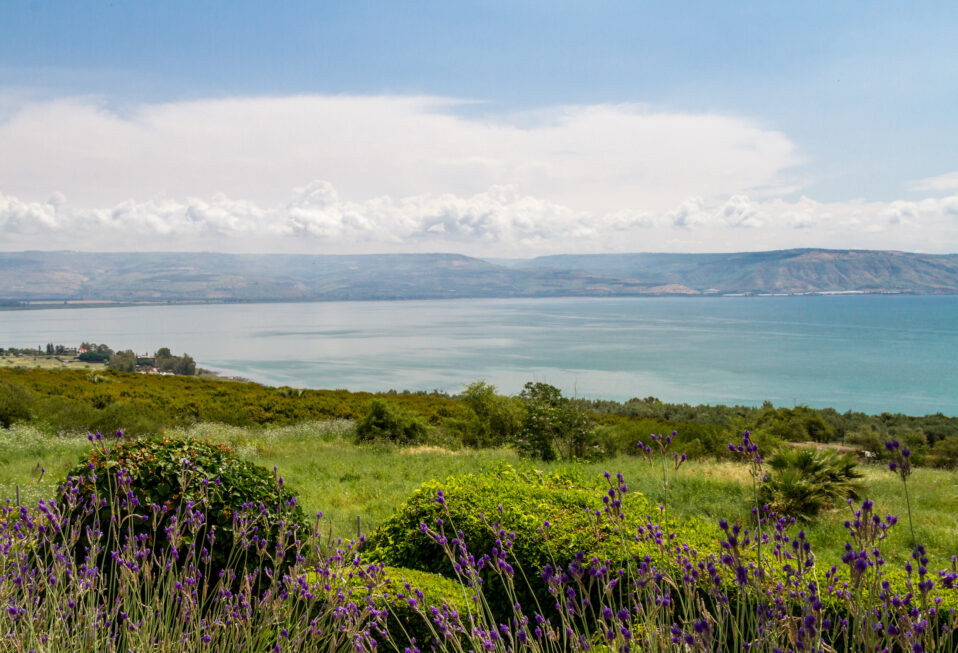The Galilee refers to the region in northern Israel, north of the Jezreel Valley, east of the Mediterranean coast, and west of the Sea of Galilee and the Jordan River. The Jewish historian Josephus described Galilee as divided into two regions—Upper Galilee, the high mountains north of the Beth Haccarem Valley, and Lower Galilee, the lower rolling hills between the Beth Haccarem Valley and the Jezreel Valley.
The New Testament and Jewish sources depict the Galilee as inhabited by devout Jews, who gathered in synagogues to study the Torah and listen to teachers expound on it. They concerned themselves with ritual purity and observing the Sabbath. The sources describe the Galileans as making pilgrimage to Jerusalem for the Jewish festivals. Sages wandered the Galilee gathering disciples and teaching people. Although separated from Jerusalem, the Galileans displayed a devotion to the Temple, the Torah, and the God of Israel.
The last forty years have enabled us to compare the presentation of the Galilee within the ancient written sources with the material culture of the people uncovered in archaeological excavations. Excavations throughout the Galilee have uncovered Jewish ritual immersion baths in both cities and villages. Their presence indicates the Galileans took ritual purity serious in their everyday lives. So too, archaeologists have discovered limestone vessels at Galilean sites. Jewish purity law permitted limestone to be repurified, where pottery had to be discarded. The discovery of ritual purity baths and limestone vessels at sites throughout the Galilee demonstrates the Galileans adhered to Jewish purity laws within their communities and homes.
Excavations in the Galilee have uncovered a special type of oil lamp which was manufactured in Jerusalem. These lamps appear at first century sites throughout the Galilee. They attest to Galileans journeying to Jerusalem, most likely for pilgrimage. The choice to bring back a lamp as a souvenir of their journey connected with their experience in the Temple where the seven-branched candelabra, the Menorah resided. Bringing the lamp home was bringing a bit of the holy light from Jerusalem into their Galilean homes.
Evidence from excavations shows Galileans avoidance of pigs in their diet. Archaeologists have discovered cow, sheep, and fish bones at sites, but very few pig bones, which differs from the excavations at non-Jewish sites surrounding the Galilee in which pig bones appear regularly. The Galilean avoidance of pigs shows their strict adherence to Jewish dietary laws.
Archaeologists have also uncovered synagogues at Galilean sites. These buildings consist of a main hall with benches surrounding the wall, making the focal point of the room the center. A Sage stood in the center of the hall to read the Scriptures and sat down to expound on them.
When we compare the archaeological evidence from the Galilee with the written sources, we find the Galilee of Jesus was a devoutly Jewish region. Jewish sources relate how Galileans were often stricter in their observance than the Jews in the south of the country. The study of the sources and the archaeological discoveries enable us to imagine the Galilee of Jesus.
Marc Turnage is President/CEO of Biblical Expeditions. He is an authority on ancient Judaism and Christian origins. He has published widely for both academic and popular audiences. His most recent book, Windows into the Bible, was named by Outreach Magazine as one of its top 100 Christian living resources. Marc is a widely sought-after speaker and a gifted teacher. He has been guiding groups to the lands of the Bible—Israel, Jordan, Egypt, Turkey, Greece, and Italy—for over twenty years.
Website: WITBUniversity.com
Facebook: @witbuniversity
Podcast: Windows into the Bible Podcast




Post a comment